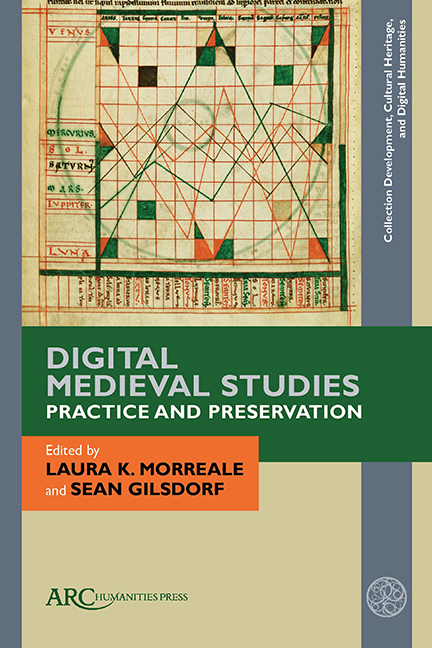Book contents
- Frontmatter
- Contents
- List of Illustrations
- Introduction: The Medievalist, Digital Edition
- Chapter 1 Beginnings: The Labyrinth Medieval Studies Website
- Chapter 2 New Approaches to Old Questions: Digital Technology, Sigillography, and digisig
- Chapter 3 Corpus Synodalium: Medieval Canon Law in a Digital Age
- Chapter 4 Teaching Constantinople as a (Pixelated) Palimpsest
- Chapter 5 Life on—and off—the Continuum
- Appendix: Permanent Links to the Catalogued Assets of Profiled Projects
- Index
Chapter 4 - Teaching Constantinople as a (Pixelated) Palimpsest
- Frontmatter
- Contents
- List of Illustrations
- Introduction: The Medievalist, Digital Edition
- Chapter 1 Beginnings: The Labyrinth Medieval Studies Website
- Chapter 2 New Approaches to Old Questions: Digital Technology, Sigillography, and digisig
- Chapter 3 Corpus Synodalium: Medieval Canon Law in a Digital Age
- Chapter 4 Teaching Constantinople as a (Pixelated) Palimpsest
- Chapter 5 Life on—and off—the Continuum
- Appendix: Permanent Links to the Catalogued Assets of Profiled Projects
- Index
Summary
THE STUDY OF the Middle Ages remains unapologetically materialist. It certainly seems that medievalists, more than any other historical field, will profess that the unique tactility of mesmerizing objects and the impossible dynamics of indescribable spaces drew them to their period of study. In typological fulfillment of Thomas’ doubt, we fully believe our texts must be touched to be truly perceived. And yet among humanists it is also medievalists who have been the “early adopters of the digital, and continue to play an important role in the development of a broader field, which came to be called digital humanities.” We embrace our manuscripts via codices and in pixelated UHD.
This curious but productive tension is, surprisingly, often least manifest where it might seem most relevant: the university classroom. For many medievalists standard teaching practices are still very literally by the book as most classrooms are no more digital-born than crisp lecture handouts, authentic audio recordings, and uncluttered PowerPoint presentations (Zoomification notwithstanding). Our historical, field-wide adoption of new research technai has pedagogical progeny as yet unborn.
But why? Medievalists’ long familiarity with computer-based practices means that the field is self-aware of how habits of study determine habits of thought. Conditioned perhaps by Roberto Busa's mid-century text analyses, the field enthusiastically engages in the current debates over machine learning and distance reading. In just a few short years medievalists have transitioned from trekking across Europe and ordering microfiche to accepting that we will read most of our documents digitized and online. We embrace the fact that our research practices must and will adapt, and we also know that this is a good thing. The technologies into which we invest ourselves fashion what and how we think: they structure our communications, govern our ability to organize knowledge, and determine how we re-produce or re-present past worlds.
We know this not only from ourselves, for our propensity to innovation even inheres in the materials we study. Both Eusebius and Accursius re-conceived the graphic possibilities of the technology of the codex with the fourth-century Chronicon, and then the thirteenth-century Glossa ordinaria, while the monks of St. Martin of Tours and St.
Information
- Type
- Chapter
- Information
- Digital Medieval Studies - Practice and Preservation , pp. 77 - 98Publisher: Amsterdam University PressPrint publication year: 2022
